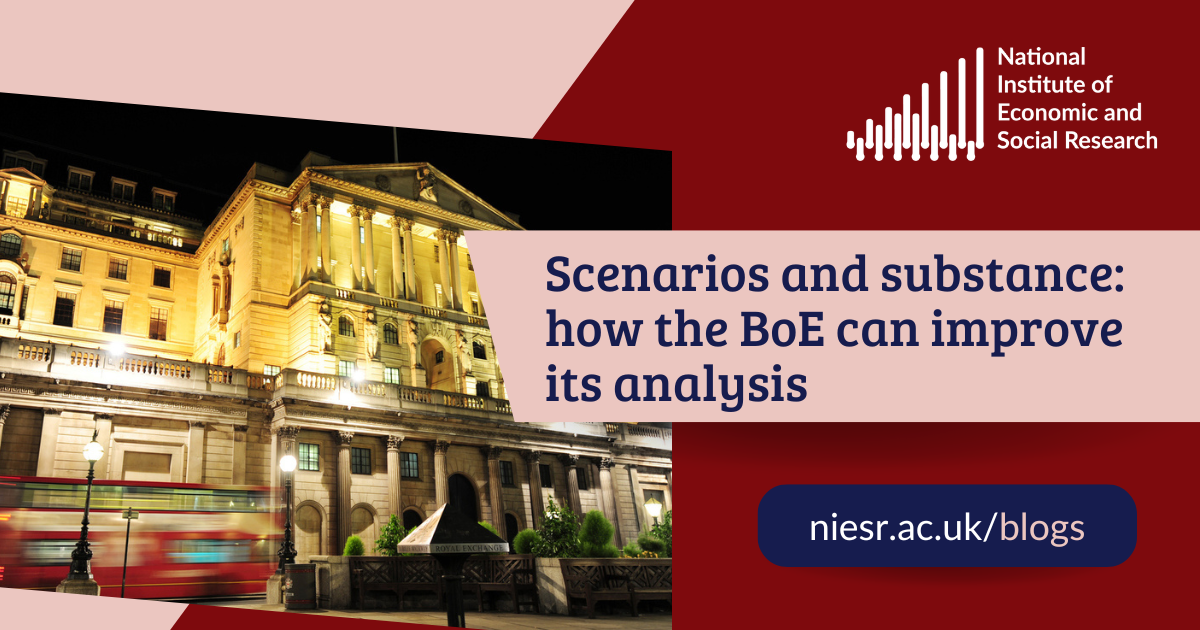UK inflation figures for May came in at 3.4%, notably above target. In addition, core inflation remained elevated at 3.5%, signalling concerns over the persistence of inflation. This is not welcome news for the Bank of England’s monetary policy committee after their decision to cut the policy rate by 25 basis points on May 8.
To the BoE’s credit, the most recent Monetary Policy Report (MPR) acknowledges that there are significant risks surrounding the path of domestic inflation. To explore these risks, the MPR included two scenarios that deviated from its baseline forecast.
The first scenario describes weaker demand driven by the uncertainty caused by recent global trade developments. The second scenario exhibits more persistent inflation owing to stronger second-round effects in wage and price setting.
Under the weak demand scenario, inflation runs 0.3 percentage points lower over the next three years, while under the persistent inflation scenario, it runs 0.4 percentage points higher.
Crucially, the MPR emphasises that these two scenarios are not mutually exclusive. This means that both weaker demand and persistent inflation could transpire simultaneously. Now, that is not a controversial statement, but it does risk muddying the waters instead of providing clarity around how these scenarios should be interpreted.
This naturally ties in with one of the recommendations from the Bernanke Review, which suggests that: “expanded use of alternative scenarios would facilitate comparisons of possible policy choices [and] more accurately quantify the risks to the forecast.”
However, without meaningful criteria or weights assigned to these scenarios, it remains unclear where the key risks to the bank’s inflation forecast actually lie.
Scenario analysis should be more deliberate than this. Simply saying that the economy could face weaker demand or persistent inflation is essentially true of any forecast in any MPR. There is no justification to why these two scenarios are the most appropriate over others that could be deployed – or what criteria would need to be met for us to know which state of the world we are in.
Without further explanation, these scenarios fall short of the spirit of the Bernanke Review’s recommendation referenced above.
One way around this issue is to present scenarios which are, by construction, mutually exclusive states of the world – defined along a clear dimension.
For example, consider a tariff scenario: the UK cannot simultaneously face a blanket 10% tariff rate and a 0% tariff rate from the US at the same time. If a specific state of the world materialises (a given tariff rate), we can place ourselves at a point along a well-defined policy axis.
Framing scenarios in this way creates a dimension of exclusivity which allows the reader to interpret and quantify risks to the forecast along a given axis.
However, without clear probabilities or mutually exclusive states, scenario analysis becomes a kind of infinite forecast theatre. One can produce endless scenarios of what might happen, without anchoring them in ‘known’ risks or quantifiable states of the world.
If the bank wants to use scenarios to support its communication strategy, it is certainly a welcome move. But it needs to tighten the logic of what these scenarios are actually being used for.
That could mean assigning probabilities or making scenarios mutually exclusive along meaningful dimensions. Alternatively, scenarios could just inform internal debate within the MPC and not be made public.
However, if scenarios are to be presented publicly, the reader must be given the tools to interpret, judge, and assess them. Otherwise, scenario analysis in this form could become a box-ticking exercise to satisfy one of the recommendations of the Bernanke Review, rather than being well crafted tool for communicating risks.
